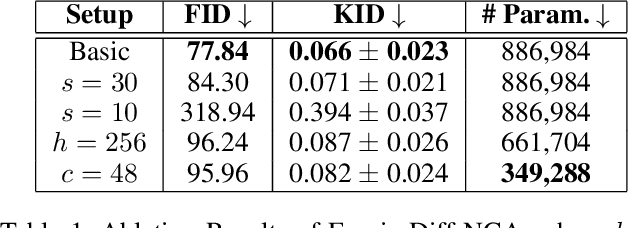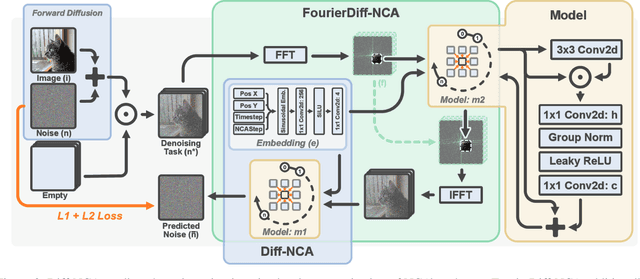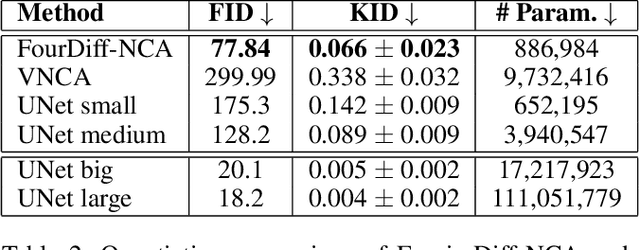Arlene Kühn
Frequency-Time Diffusion with Neural Cellular Automata
Jan 11, 2024



Abstract:Denoising Diffusion Models (DDMs) have become the leading generative technique for synthesizing high-quality images but are often constrained by their UNet-based architectures that impose certain limitations. In particular, the considerable size of often hundreds of millions of parameters makes them impractical when hardware resources are limited. However, even with powerful hardware, processing images in the gigapixel range is difficult. This is especially true in fields such as microscopy or satellite imaging, where such challenges arise from the limitation to a predefined generative size and the inefficient scaling to larger images. We present two variations of Neural Cellular Automata (NCA)-based DDM methods to address these challenges and jumpstart NCA-based DDMs: Diff-NCA and FourierDiff-NCA. Diff-NCA performs diffusion by using only local features of the underlying distribution, making it suitable for applications where local features are critical. To communicate global knowledge in image space, naive NCA setups require timesteps that increase with the image scale. We solve this bottleneck of current NCA architectures by introducing FourierDiff-NCA, which advances Diff-NCA by adding a Fourier-based diffusion process and combines the frequency-organized Fourier space with the image space. By initiating diffusion in the Fourier domain and finalizing it in the image space, FourierDiff-NCA accelerates global communication. We validate our techniques by using Diff-NCA (208k parameters) to generate high-resolution digital pathology scans at 576x576 resolution and FourierDiff-NCA (887k parameters) to synthesize CelebA images at 64x64, outperforming VNCA and five times bigger UNet-based DDMs. In addition, we demonstrate FourierDiff-NCA's capabilities in super-resolution, OOD image synthesis, and inpainting without additional training.
 Add to Chrome
Add to Chrome Add to Firefox
Add to Firefox Add to Edge
Add to Edge